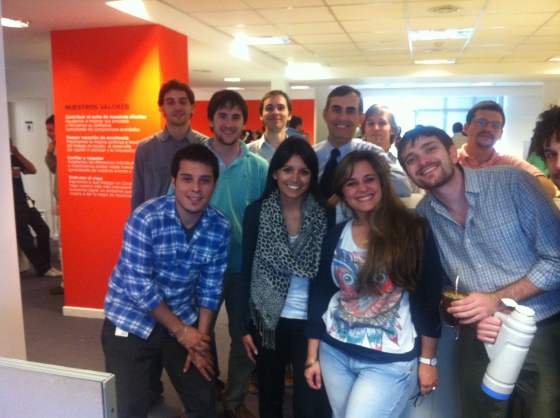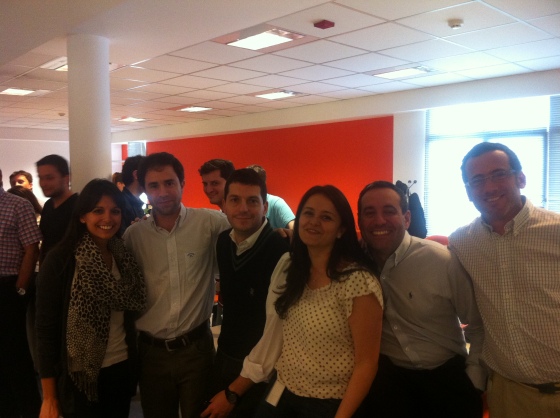 The weather in Buenos Aires has been all kinds of crazy since our arrival in early October and today it seems the weather gods have decided to make me feel “at home” with all of those bracing for Hurricane Sandy in the Northeast region of the States. This Spring in Capital Federal it has not been unusual for it to go from 45 degrees (F) at night to 75 during the day or from scorching sun to downpours. I’ve learned to just travel with an umbrella just in case! We were fortunate to experience a beautiful sunny weekend which is why I was very surprised to be woken up by a big storm this morning. And, in a typical turn of Argentine events, a sign written on (very wet) cardboard welcomed me at the subte during my commute to work this morning:
The weather in Buenos Aires has been all kinds of crazy since our arrival in early October and today it seems the weather gods have decided to make me feel “at home” with all of those bracing for Hurricane Sandy in the Northeast region of the States. This Spring in Capital Federal it has not been unusual for it to go from 45 degrees (F) at night to 75 during the day or from scorching sun to downpours. I’ve learned to just travel with an umbrella just in case! We were fortunate to experience a beautiful sunny weekend which is why I was very surprised to be woken up by a big storm this morning. And, in a typical turn of Argentine events, a sign written on (very wet) cardboard welcomed me at the subte during my commute to work this morning:
“No hay mas trenes a Catheldral hoy”
No more trains to Cathedral today
Lucky me. One hour in a taxi and $35 pesos* later (thanks to sharing the ride with another desperate subte passenger going in the same direction!) I finally made it to Conexia. Too bad because the subte was supposed to be free during this morning’s rush hour commute due to a scheduled union protest! Power is temporarily out in a few neighborhoods here and the bad weather is expected to continue through tomorrow. I’m hoping that everyone here and at home in the States stays safe from Mother Nature.
No mas lluvia por favor!!
*to put cost into perspective one ride on the subte costs $2.50 pesos ($0.50 USD) to anywhere on the line. My taxi ride this morning was about $70 pesos in total ($14 USD), but I split with someone for $35 pesos ($7 USD). The equivalent taxi ride in Manhattan would have cost upwards of $28 USD, especially given the crazy traffic!









